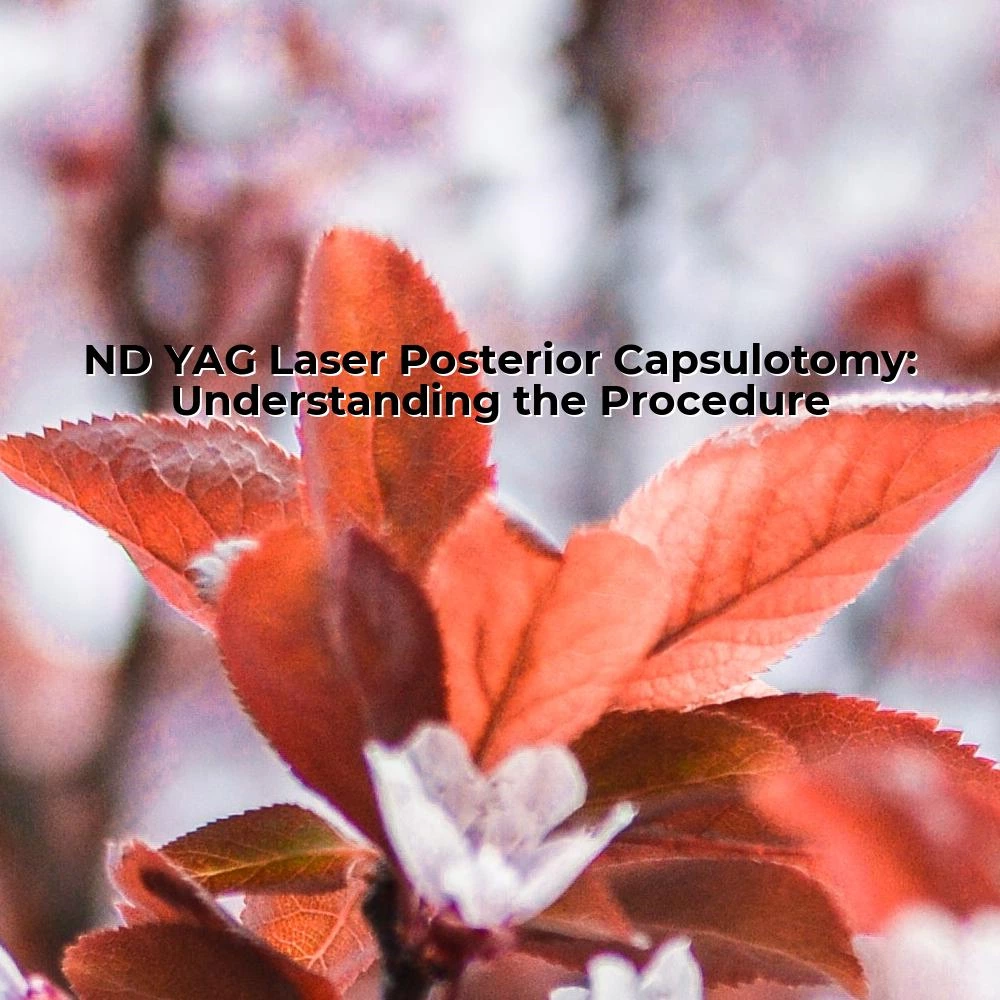ND YAG Laser Posterior Capsulotomy
| Visit:82

ND YAG Laser Posterior Capsulotomy
Introduction
Nd YAG Laser Posterior Capsulotomy is a clinical method utilized for addressing posterior capsule opacification (PCO), a usual occurrence post cataract surgery. This complication, termed as a 'secondary cataract', is characterized by reduced vision or perceived visual inconsistencies due to the clouding of the posterior capsule. The objective of this article is to offer a comprehensive understanding of this procedure to our esteemed medical professionals.
Procedure Overview
A Nd YAG (Neodymium-Doped Yttrium Aluminium Garnet) laser is employed in the posterior capsulotomy process. Unlike conventional surgery, this procedure is noninvasive and typically concluded in few minutes. The patient is first subjected to pupil dilation via administered eye drops, following which local topical anesthesia is applied. The specialist focuses the Nd YAG laser on the clouded posterior capsule and fires a series of tiny, rapid energy bursts. This establishes a clear central pathway for light to penetrate, effectively restoring the patient's vision. The operation does not require any incisions or sutures, and the patient can usually resume normal activities shortly after.
As reported on ciellulu.net, beside posterior capsulotomy, Nd YAG laser is also used in other ophthalmic procedures, demonstrating its versatile utility in the field of ophthalmology.
Advantages of Nd YAG Laser Posterior Capsulotomy
One major advantage of this procedure is the simplicity and noninvasiveness of the method, making it an attractive therapeutic option for PCO. The Nd YAG laser provides precision cutting with reduced collateral damage to adjacent areas. Furthermore, the immediate restoration of visual acuity, coupled with minimal postoperative patient discomfort and potentially negligible recovery period, are key advantages of this procedure.
Potential Risks and Complications
As with all medical procedures, risks are inherent in Nd YAG laser posterior capsulotomy. The most common side effect is transient raised intraocular pressure immediately following the procedure, which can usually be managed by appropriate medication. Other potential complications including retinal detachment, macular edema, cystoid macular edema, and IOL damage are rare but require precise surgical action and post-procedural monitoring to minimize their occurrence and impact.
Conclusion
Nd YAG laser posterior capsulotomy has emerged as an efficacious, noninvasive method for addressing PCO, backed by extensive scientific research and global usage. Its advantages vastly outweigh its minimal risks, cementing its place as a preferred modality against posterior capsule opacification. As responsible healthcare professionals, remaining updated about such innovative techniques is necessary to ensure optimal patient outcomes. As part of our medical journey, let's continue the dedicated pursuit and implementation of such advancements in ophthalmological care.




 Ciellulu Laser - Facial Machine Supplier
Ciellulu Laser - Facial Machine Supplier

